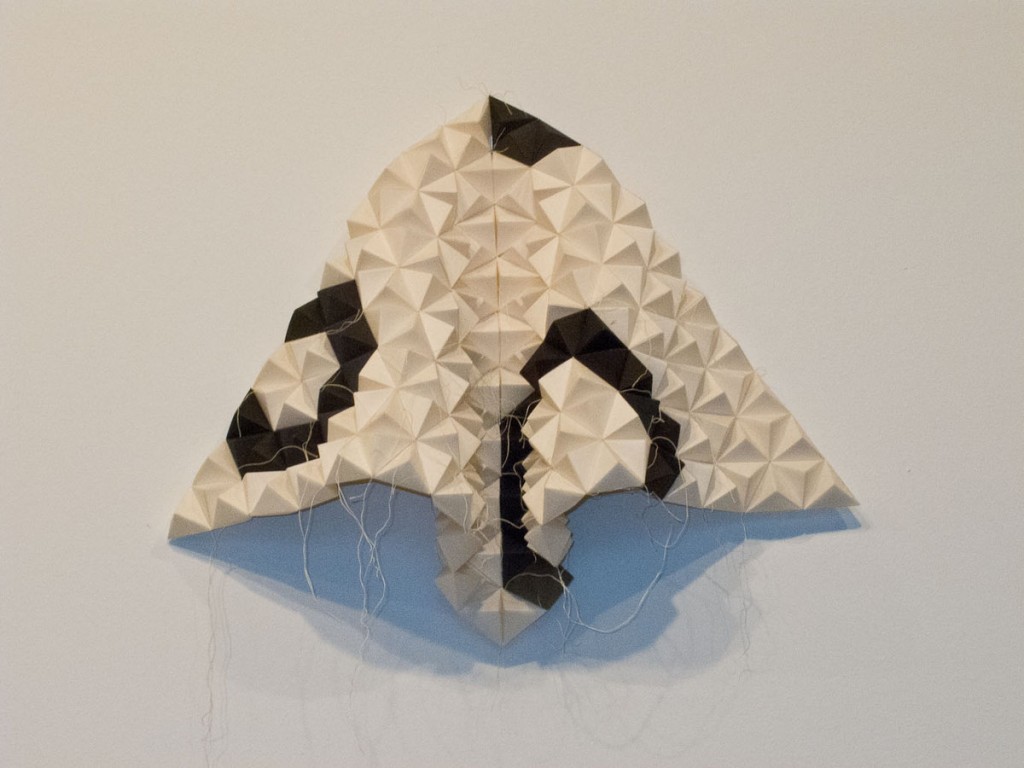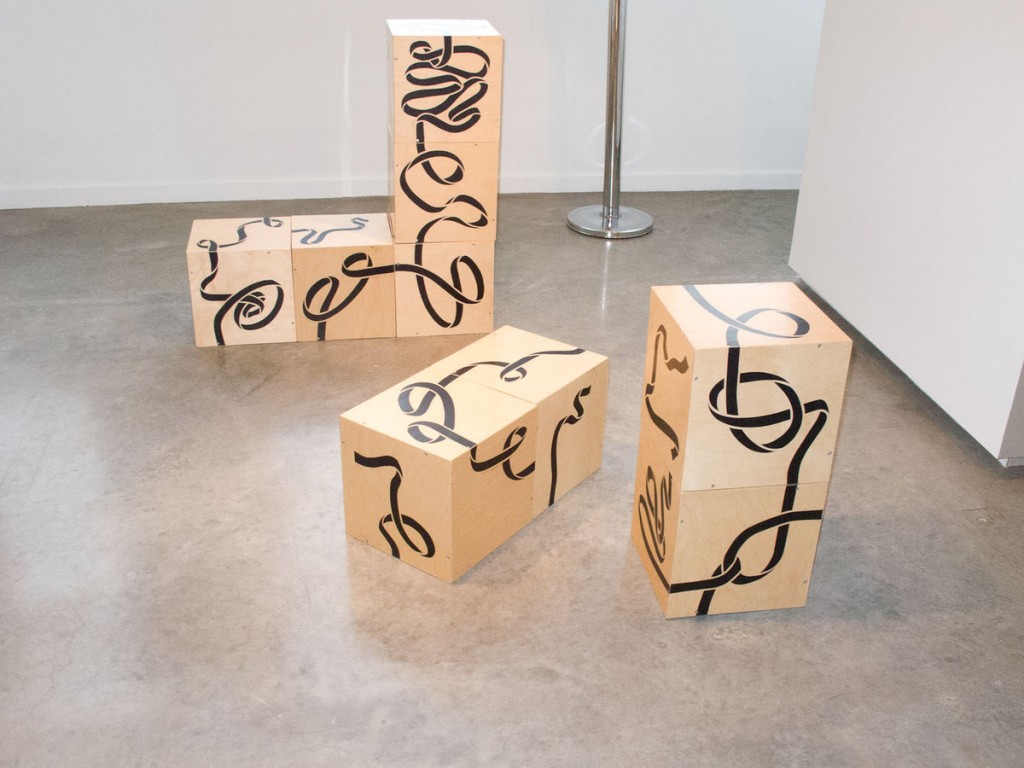Take 5 Interview: Zoe Keramea

Photograph courtesy of the artist & Krzysztof Osinski for Exhibition Footnotes

Photograph courtesy of the artist & Krzysztof Osinski for Exhibition Footnotes
1. How did you get involved with All Our Relations?
In 2005, I had a show at “The Drawing Center” in New York which was curated by Catherine de Zegher. She brought my work to the attention of Gerald McMaster and they invited me to take part in “all our relations”.
2. Why moths?
Moths are emblems of transformation from the earthbound to the ethereal. They are very fragile creatures as perhaps we are. In the Greek language we call a moth “psyche”, which means soul. The transformation in these works is also literal since they move from a two-dimensional to a three-dimensional existence. A flat strip of paper is folded into a hexahedron, a triangular dipyramid, and joined together with hundreds of others with thread to become a “Moth”. The “Moth” itself can be folded inward as it has now become a flexible structure which can assume any number of different states.They are named after real moths that they faintly resemble.
3. You are responsible for some of the branding imagery – the ribbons that swirl and interconnect, which is a more colourful version of the black ribbon used on your interactive work 9 Blocks. Why did you choose to pare down the colour to black instead of keeping the more colourful version?
With multi-coloured lines on the surfaces of the “Nine Blocks”, the already difficult play would have become impossible. Hence the black ribbon. The branding “Journey Lines” imagery had to be in colour to identify the four separate journey lines for the four main venues of the Biennale.
4. I read somewhere that your folded paper constructions are influenced by the artist Lygia Clark. What was it about her work that you found yourself drawn to and inspired by?
It was Catherine de Zegher who had pointed out to me some correspondence between my work and the work of Lygia Clark. May be because of my long interest in topology and also interactivity.
5. This biennale is kind of hippyish isn’t it? Are you an undercover hippy?
No. I ‘ve dyed T-shirts when I was 16, but I never tie dyed any…
